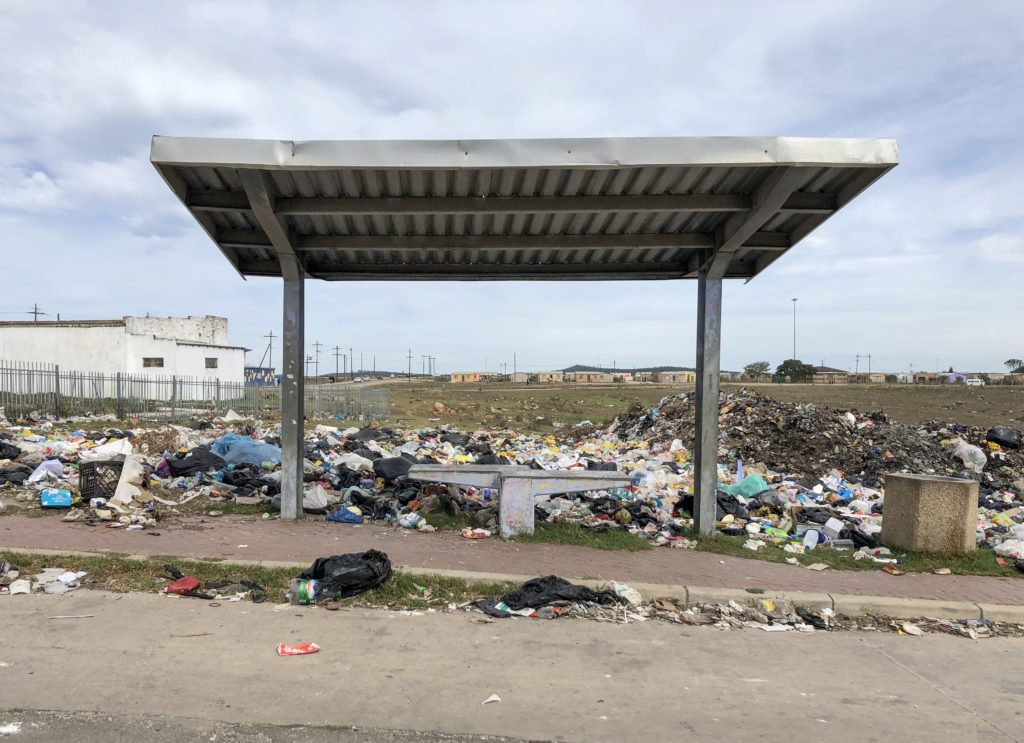Compiled by Harold Gess
Plastic is one of the great inventions of the 20th Century. It has totally changed the way we live, and it’s hard to imagine a world without it.
A quick glance around the room will turn up a variety of types of plastics, from the fabric and buttons of your clothes to the soles of your shoes, from the varnish on your furniture to the paint on your walls, from the cables in the walls to the lightbulbs and insulation in your ceiling, from the spectacles on your nose to the hair extensions on your head, and from the teabag in your teacup to the packet that your biscuits came in.
Plastic is so much a part of our lives that, most of the time, we don’t see it until it turns up somewhere we don’t want to see it, such as at the Cradock Road entrance to our city where the ‘national flowers’ adorn every bush and fence.
Single-use
The biggest contributor to our plastic pollution problem is ‘single-use’ plastic, designed to be used once for a short length of time and then discarded. Obvious examples include plastic water or cold drink bottles, bags, straws, polystyrene cups, utensils, and condiment sachets. Less obvious may be coffee cups (yes, they’re lined with plastic), teabags (yes, most of them contain plastic), and the masses of plastic that contains the vast majority of our food.
Packaging
All this single-use plastic packaging makes up 42% of entire world plastic production and that translates into around 150 million tons per year of single-use packaging to be disposed of. As much as 53% of South African plastic production is for single-use packaging.
Startling figures
Looking at some of those obvious examples of single-use plastic.
- Worldwide we use more than 500 billion bottles in a year. That’s around 1 million plastic bottles per minute.
- South Africans used around 3.5 billion plastic bottles last year.
- Worldwide we use more than a trillion plastic bags per year. That’s around 2 million bags per minute
- South Africans use more than 8 billion plastic shopping bags per year.
Aren’t we recycling?
Figures calculated independently by the WWF and researchers at UCT indicate that in South Africa we actually only recycle about 16% of plastic. The rest goes to landfill or into the wider environment. The most recycled plastic in South Africa is plastic cold drink/water bottles. We recycle about 60% of these and that’s a great start but it still means that more than 1 billion of them are ending up in the environment every year!
What can I do?
It often seems difficult for ordinary consumers to make a difference but if enough of us start making small changes we can bring about change. It takes a while to make new habits but
Some ideas to get started:
- Buy a few strong reusable shopping bags and take them to the shops every time you go. A reusable bag can replace several hundred single-use bags and will also save you money over time.
- When possible, shop for unpackaged fruit and vegetables and use a reusable produce bag for weighing and transport. Pick n Pay Pepper Grove sells reusable produce bags just next to the weigh station.
- Take a reusable water bottle with you whenever you go out. Fill it at home or refill it with purified water at Spar, Pick n Pay, etc.
- Take a reusable coffee cup if you like take-away coffee. Some coffee vendors, including Homeground and Spar, will even give you a discount if you bring your own cup.
- Tell take-away restaurants if you don’t need the condiment sachets or cutlery.
- Choose products wrapped in less plastic whenever possible.
- Follow the Makana Plastic Action Group (MPAG) Facebook page for information about local retailers making a change for less plastic
Remember to Refuse, Reduce, Reuse, Repurpose and Recycle in that order!


